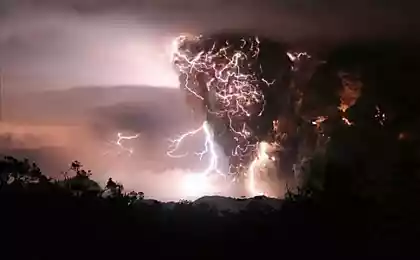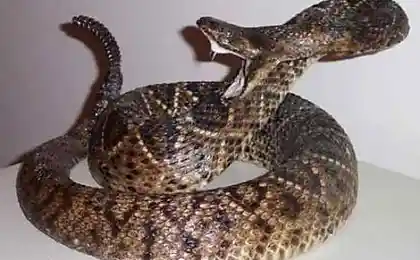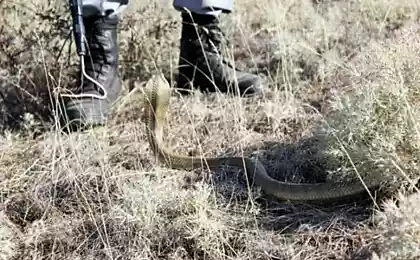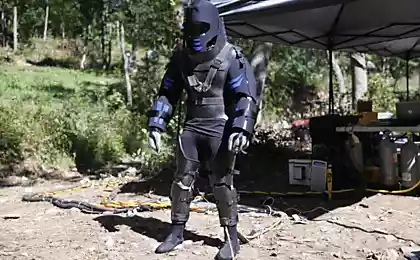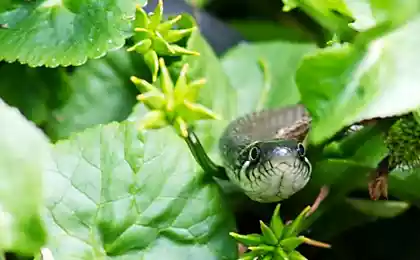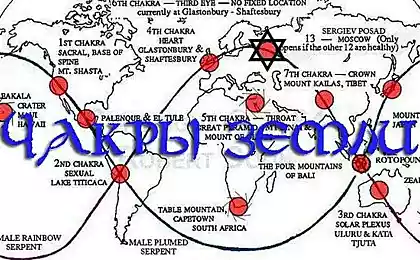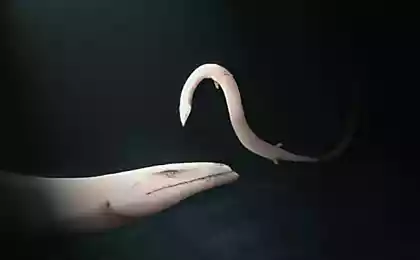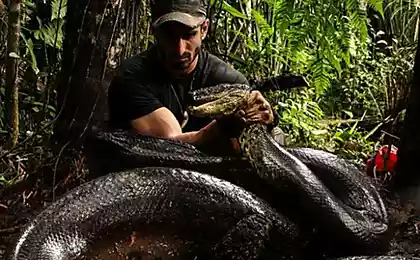1104
The most beautiful snake planet
Snake afraid - not to go into the jungle. Mowgli.
A selection of beautiful pictures of snakes - poisonous or not - from all continents.
Keeled grassy too. Snake non-toxic, and photos uzhik yawns after a hearty lunch to put in place the jaw and restore breathing.
Photo keelback snake, author Jason Wiles specially for National Geographic
Jameson Mamba, elegant green snake under two meters in length, which has a poison nerve. Denied the muscles of the respiratory system and the victim slowly but surely choking. Then the snake reap it. It lives in Africa. There is the black mamba, the length of 4 meters, which is as poisonous as green, but are afraid of it anymore. There is a belief that if a black mamba crawled way expect death. Or she crawl and bite or simply die by accident. It is believed that the bite is deadly mambas, but it is not. If within an hour after the bite to take the serum, the survival is guaranteed. Run away from the snake is almost impossible Mamba moves at a speed of 11 km / h.
Mamba Jason. Photos Mattias Klum for National Geographic
Rainbow boa lives in South America, particularly large constrictors in the Amazon region. It feeds on small animals, most large animal who can suffocate - it's a great rat. If you feel threatened, and can bite, but they are not poisonous.
Nonpoisonous Mexican king snake from the family uzheoobraznyh. He lives in Mexico, it is sometimes met in Texas.
Grape (ostrogolovaya) snake lives in Venezuela. Because she is very beautiful and non-toxic, it is often kept in terrariums. Serpent Sting toxic but not fatal. The main thing is time to take action.
Weevil lives in North and South America. For a man is perfectly safe. Timid and shy, at the slightest danger of producing smelly liquid and crawl. In general, these are reptiles "skunks».
Yellow bellied snake. The official name of it - two-tone bonito, lives in salt water in the water areas. Very poisonous, it lives in the Far East. It is the only representative of its genus, the air it absorbs all over, selected out rarely. Hiding in the weeds where emerges, biting victim, she stuns her tail, and then strangling and eating. In general, it is three in one, a sort of sea-cobra boa, but still a dangerous fighter.
Rainbow schitohvost. Very rare snake of South America. There were caught three copies of snakes of this species very little is known, even incomprehensible, poisonous or not, but generally schitohvosty mostly not poisonous. In the sun, the skin is iridescent schitohvosta shimmers like a precious sapphire.
Texas rat snake or a white snake. As the name suggests, lives in Texas, as well as in Mexico. Not dangerous, non-toxic, nobly beautiful. The ideal specimen for the content in the home cage.
Poloz (rat snake) Baird. Very nice runner chameleon. On gravel and sand has a rusty-reddish color, but on the ground it becomes the color of steel, cast polished metal flakes. Very rare color.
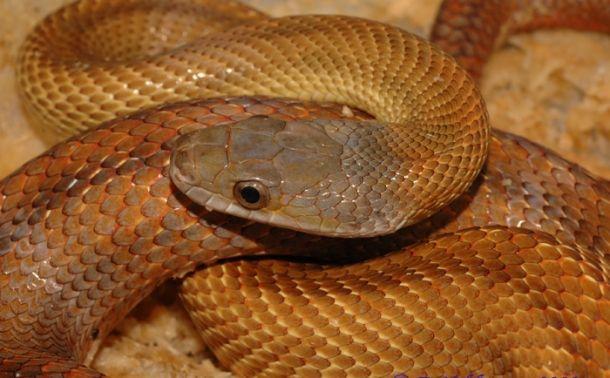
Red tide
Changes color
Metal ebb
Coral albino snake found in Texas, a rare subspecies of coral snakes. Poisonous. Color such as if on emery cloth embroidered with Russian patterns.
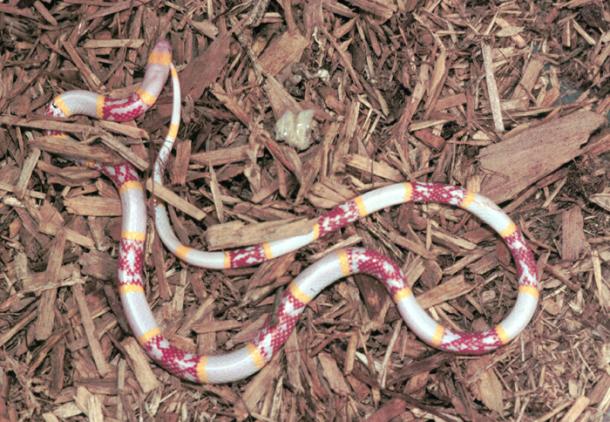
Coral snake inhabiting the Indian subcontinent. A rare case of mimicry when color coral snake longitudinal rather than cross.
Red Heads - very beautiful and venomous snake inhabiting Vietnam, Malaysia and the islands of Indonesia. Very toxic, it can eat other snakes. It is similar in color dvuhpolosaya glandular snake, whose upper band is not blue, and dark blue, almost black. Also poisonous, and it is also very dangerous. And also eat snakes.
Carpet python. Snake in the style of Beeline, not otherwise. And why the company has chosen not afford such a logo, it would be fun. It lives in Australia and Indonesia. Not poisonous, but can easily suffocate.
Poloz Mellendorfa, non-toxic snake, common in Southeast Asia.
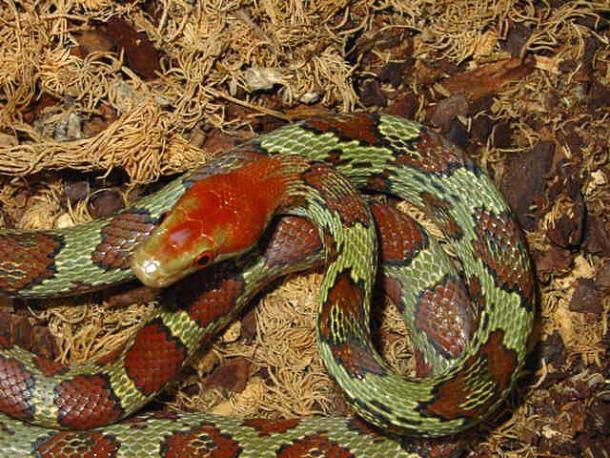
Rainbow snake inhabits the southeastern United States, powered marine life and small amphibians. Non-aggressive, but if you feel danger, it can bite. Do not poisonous.
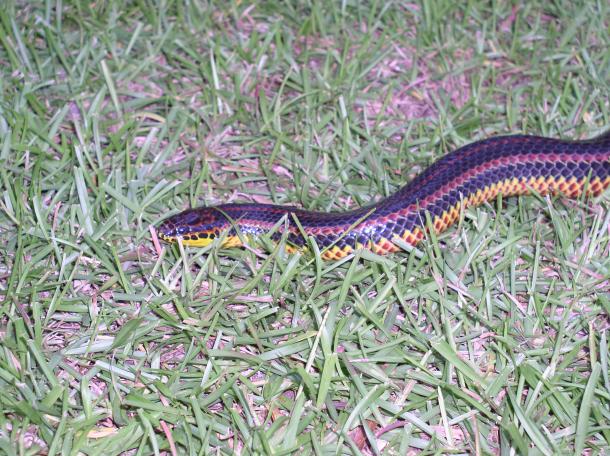

Royal collared snake lives in the United States and Mexico. As a rule, these snakes are gray or cream with dark spots on the underside of which are bright red and orange at the tail.

Common garter snake has the beginnings of a true live births. California subspecies of this snake is endangered.
A selection of beautiful pictures of snakes - poisonous or not - from all continents.
Keeled grassy too. Snake non-toxic, and photos uzhik yawns after a hearty lunch to put in place the jaw and restore breathing.
Photo keelback snake, author Jason Wiles specially for National Geographic
Jameson Mamba, elegant green snake under two meters in length, which has a poison nerve. Denied the muscles of the respiratory system and the victim slowly but surely choking. Then the snake reap it. It lives in Africa. There is the black mamba, the length of 4 meters, which is as poisonous as green, but are afraid of it anymore. There is a belief that if a black mamba crawled way expect death. Or she crawl and bite or simply die by accident. It is believed that the bite is deadly mambas, but it is not. If within an hour after the bite to take the serum, the survival is guaranteed. Run away from the snake is almost impossible Mamba moves at a speed of 11 km / h.
Mamba Jason. Photos Mattias Klum for National Geographic
Rainbow boa lives in South America, particularly large constrictors in the Amazon region. It feeds on small animals, most large animal who can suffocate - it's a great rat. If you feel threatened, and can bite, but they are not poisonous.
Nonpoisonous Mexican king snake from the family uzheoobraznyh. He lives in Mexico, it is sometimes met in Texas.
Grape (ostrogolovaya) snake lives in Venezuela. Because she is very beautiful and non-toxic, it is often kept in terrariums. Serpent Sting toxic but not fatal. The main thing is time to take action.
Weevil lives in North and South America. For a man is perfectly safe. Timid and shy, at the slightest danger of producing smelly liquid and crawl. In general, these are reptiles "skunks».
Yellow bellied snake. The official name of it - two-tone bonito, lives in salt water in the water areas. Very poisonous, it lives in the Far East. It is the only representative of its genus, the air it absorbs all over, selected out rarely. Hiding in the weeds where emerges, biting victim, she stuns her tail, and then strangling and eating. In general, it is three in one, a sort of sea-cobra boa, but still a dangerous fighter.
Rainbow schitohvost. Very rare snake of South America. There were caught three copies of snakes of this species very little is known, even incomprehensible, poisonous or not, but generally schitohvosty mostly not poisonous. In the sun, the skin is iridescent schitohvosta shimmers like a precious sapphire.
Texas rat snake or a white snake. As the name suggests, lives in Texas, as well as in Mexico. Not dangerous, non-toxic, nobly beautiful. The ideal specimen for the content in the home cage.
Poloz (rat snake) Baird. Very nice runner chameleon. On gravel and sand has a rusty-reddish color, but on the ground it becomes the color of steel, cast polished metal flakes. Very rare color.

Red tide
Changes color
Metal ebb
Coral albino snake found in Texas, a rare subspecies of coral snakes. Poisonous. Color such as if on emery cloth embroidered with Russian patterns.

Coral snake inhabiting the Indian subcontinent. A rare case of mimicry when color coral snake longitudinal rather than cross.
Red Heads - very beautiful and venomous snake inhabiting Vietnam, Malaysia and the islands of Indonesia. Very toxic, it can eat other snakes. It is similar in color dvuhpolosaya glandular snake, whose upper band is not blue, and dark blue, almost black. Also poisonous, and it is also very dangerous. And also eat snakes.
Carpet python. Snake in the style of Beeline, not otherwise. And why the company has chosen not afford such a logo, it would be fun. It lives in Australia and Indonesia. Not poisonous, but can easily suffocate.
Poloz Mellendorfa, non-toxic snake, common in Southeast Asia.

Rainbow snake inhabits the southeastern United States, powered marine life and small amphibians. Non-aggressive, but if you feel danger, it can bite. Do not poisonous.


Royal collared snake lives in the United States and Mexico. As a rule, these snakes are gray or cream with dark spots on the underside of which are bright red and orange at the tail.

Common garter snake has the beginnings of a true live births. California subspecies of this snake is endangered.




